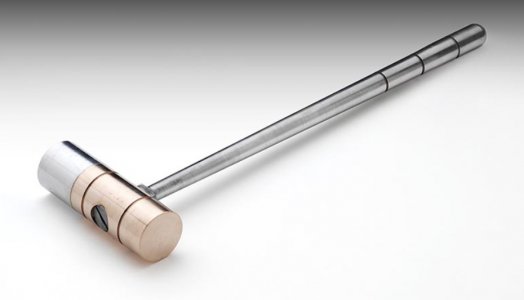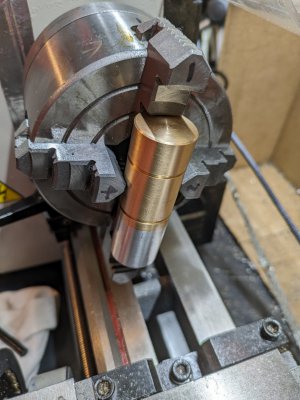- Joined
- Nov 6, 2012
- Messages
- 128
I’m making a Hemingway Machinist’s Hammer and need to drill a hole to mount the handle. I have a LMS 7x16 mini-lathe and a Faceplate & Clamp Kit. I figure to use a Tailstock Center to locate the correct longitudinal location, which is off-center )see link below), but am not sure how to locate the center “high point” across the narrow width, other than manually moving the part to match the Tailstock Center.
What’s a good way to align my part on a faceplate to drill/ream that centered hole? Precise isn’t necessary, but if there’s a better way, I’d like to learn it. I’ll be drilling/reaming a 7/16” dia hole through and 1/2” dia shoulders to mount the handle, so will have to flip it once for the 2nd 1/2” dia shoulder.
BRET
What’s a good way to align my part on a faceplate to drill/ream that centered hole? Precise isn’t necessary, but if there’s a better way, I’d like to learn it. I’ll be drilling/reaming a 7/16” dia hole through and 1/2” dia shoulders to mount the handle, so will have to flip it once for the 2nd 1/2” dia shoulder.
Machinist's Hammer - hemingwaykits.com
Unique projects for the small workshop owner. Please browse our Toolroom and Engine Bay for our latest project kits.
www.hemingwaykits.com
BRET



